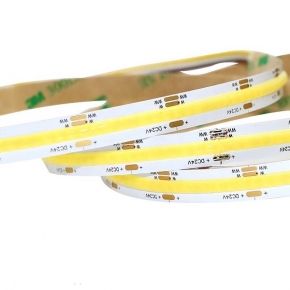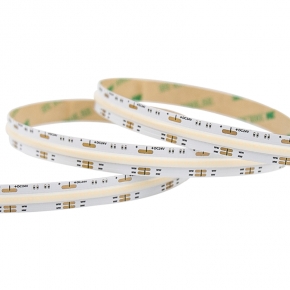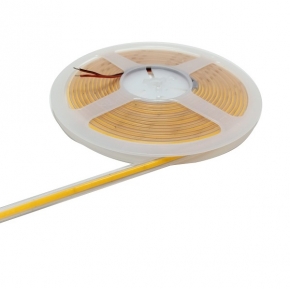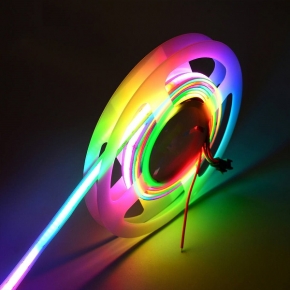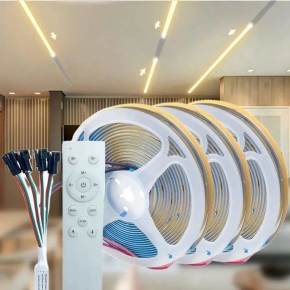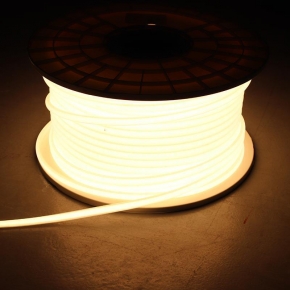comprehensive Guide to LED Strip Lights: Everything You Need to Know
Comprehensive Guide to LED Strip Lights: Everything You Need to Know
LED strip lights, known for their flexibility, efficiency, and versatility, have become indispensable in modern lighting solutions. From home decoration to commercial installations, these lighting strips offer a myriad of benefits. This comprehensive guide delves into the specifics of LED strip lights, their applications, and why they are an excellent choice for various lighting needs.

What Are LED Strip Lights?
LED strip lights are linear lighting fixtures composed of flexible printed circuit boards (PCBs) equipped with surface-mounted LEDs (SMD), resistors, and other electronic components. These strips can be easily cut, connected, and installed to provide a uniform and efficient lighting source.
Key Features of LED Strip Lights
1. Flexibility and Customization
· Flexible PCB: The flexible PCB allows for easy bending and shaping, making it ideal for curved surfaces and intricate designs.
· Length Customization: Users can cut the strips to the desired length, facilitating installation in various spaces.
2. Energy Efficiency
· Low Power Consumption: LED strip lights consume significantly less power compared to traditional lighting solutions.
· Long Lifespan: With a lifespan of up to 50,000 hours, LED strip lights offer long-term cost savings and reduced maintenance requirements.
3. Versatility in Applications
· Wide Range of Colors and Brightness: Available in various color temperatures (warm white, cool white, RGB, etc.) and brightness levels, accommodating diverse lighting needs.
· Waterproof Options: Suitable for indoor and outdoor applications, with waterproof ratings such as IP65 and IP67 for use in moist or rainy environments.
Types of LED Strip Lights
1. By LED Chip Type
· SMD3528: Smaller LED chips, suitable for applications requiring lower brightness.
· SMD5050: Larger LED chips, offering higher brightness and better heat dissipation.
2. By Color Control
· Single Color: Fixed color temperature, ideal for general illumination.
· RGB: Capable of producing a wide range of colors using red, green, and blue LED chips.
· RGBW: Adds a white LED chip to RGB, enhancing color mixing capabilities and brightness.
3. By Voltage
· DC12V: Commonly used for low-power applications, safer to handle.
· DC24V: Suitable for longer runs due to reduced voltage drop.
· AC220V: Directly powered by mains electricity, simplifying installation but requiring more caution during handling.
Applications of LED Strip Lights
LED strip lights find applications in numerous settings, including:
· Home Lighting: Under-cabinet lighting, TV backlighting, mirror illumination, and staircase lighting.
· Commercial Spaces: Shops, restaurants, bars, and offices.
· Architectural Lighting: Accent lighting, cove lighting, and signage.
· Automotive Lighting: Interior ambient lighting and underglow lighting.
Installation and Maintenance
1. Installation
· Surface Preparation: Ensure the surface is clean, smooth, and free from dust or debris.
· Adhesive Application: Use high-quality adhesive tape for secure mounting.
· Power Connection: Connect the strip lights to a compatible power supply, considering voltage and current requirements.
2. Maintenance
· Regular Inspection: Check for any signs of damage or wear.
· Cleaning: Gently wipe the strips with a soft, dry cloth to remove dust.
· Avoid Overloading: Ensure the power supply is adequate for the connected strip lights to prevent overheating.
Conclusion and Order Information
LED strip lights offer an excellent blend of flexibility, efficiency, and versatility, making them ideal for a wide range of lighting applications. By understanding the key features and types of LED strip lights, you can make an informed decision to enhance your lighting solutions.
If you are ready to elevate your lighting projects with high-quality LED strip lights, LEDWay Lighting is your trusted partner. Our expertise in LED lighting products and commitment to customer satisfaction ensure that you receive the best possible lighting solutions. To place an order or inquire about our range of LED strip lights, please contact us at sales2@ledwaylighting.com. We look forward to helping you illuminate your world with brilliance.

